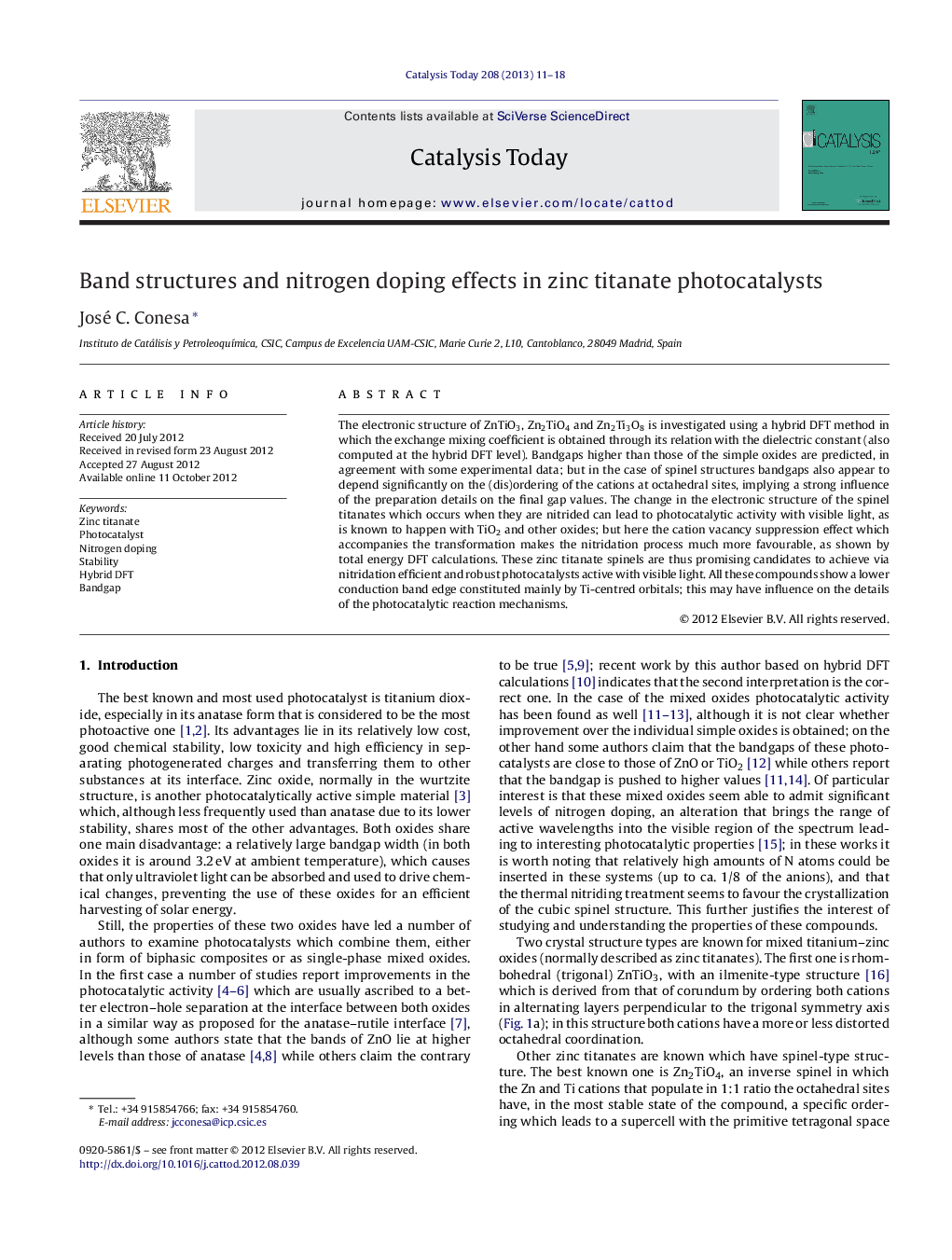| Article ID | Journal | Published Year | Pages | File Type |
|---|---|---|---|---|
| 54837 | Catalysis Today | 2013 | 8 Pages |
The electronic structure of ZnTiO3, Zn2TiO4 and Zn2Ti3O8 is investigated using a hybrid DFT method in which the exchange mixing coefficient is obtained through its relation with the dielectric constant (also computed at the hybrid DFT level). Bandgaps higher than those of the simple oxides are predicted, in agreement with some experimental data; but in the case of spinel structures bandgaps also appear to depend significantly on the (dis)ordering of the cations at octahedral sites, implying a strong influence of the preparation details on the final gap values. The change in the electronic structure of the spinel titanates which occurs when they are nitrided can lead to photocatalytic activity with visible light, as is known to happen with TiO2 and other oxides; but here the cation vacancy suppression effect which accompanies the transformation makes the nitridation process much more favourable, as shown by total energy DFT calculations. These zinc titanate spinels are thus promising candidates to achieve via nitridation efficient and robust photocatalysts active with visible light. All these compounds show a lower conduction band edge constituted mainly by Ti-centred orbitals; this may have influence on the details of the photocatalytic reaction mechanisms.
Graphical abstractFigure optionsDownload full-size imageDownload high-quality image (152 K)Download as PowerPoint slideHighlights► Hybrid DFT with first principles-based exchange mixing gives reliable bandgaps. ► Octahedral cation ordering affects strongly to the bandgaps of Zn–Ti spinels. ► Conduction band edge of zinc titanates is formed by Ti 3d orbitals. ► N-doping of Zn titanate, more favourable than in TiO2, can give bandgaps <2.5 eV.
